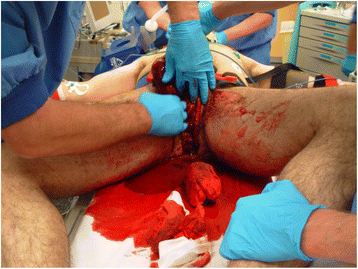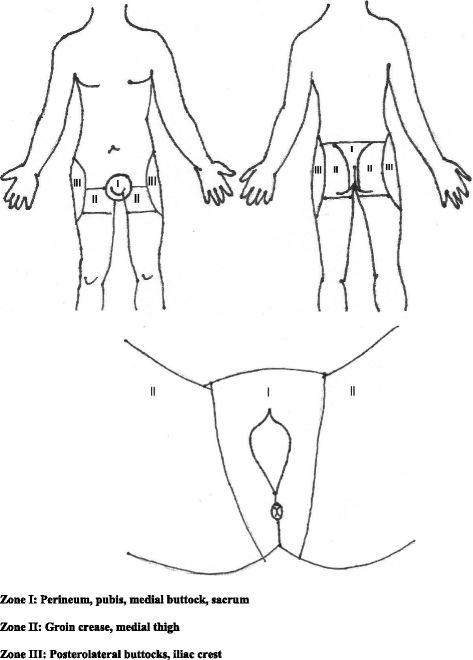Open pelvic fracture: the killing fracture?
- PMID: 29653551
- PMCID: PMC5899387
- DOI: 10.1186/s13018-018-0793-2
Open pelvic fracture: the killing fracture?
Abstract
Background: Open pelvic fractures are rare but represent a serious clinical problem with high mortality rates. The purpose of this study was to evaluate the outcomes of open pelvic fractures in our clinic and to compare the results from our patient group with those of closed fractures and with the literature from the past decade.
Methods: Data of patients older than 16 years of age who were admitted to our hospital with a pelvic fracture between January 1, 2004, and December 31, 2014, were analyzed. The collected data were patient demographics, mechanism of injury, RTS, ISS, transfusion requirement during the first 24 h, Gustilo-Anderson and Faringer classification, number and type of interventions complications, mortality, and length of stay.
Results: Twenty-four of 492 patients (5% of all pelvic fracture patients) had an open fracture. Their mean age was 36 years, the mean ISS was 31, and the mean number of transfused packed red blood cells was 5.5. These numbers were all significantly higher than in the patients with a closed fracture, although they were comparable to other studies with open fractures. The mortality was 4% in the open group versus 14% in the closed group (p = 0.23). The reported mortality in the literature ranges between 4 and 45%.
Conclusion: Open pelvic fractures are relatively rare but are a cause of significant morbidity. In this series, we treated patients with open pelvic fractures successfully, with a survival rate of 96%. There was no significant difference in survival rate between open and closed pelvic fractures. Compared with other studies, the mortality in our study was relatively low.
Conflict of interest statement
Ethics approval and consent to participate
The abovementioned study was reviewed by the medical ethical committee of the Radboudumc and did not fall within the remit of the Medical Research Involving Human Subjects Act.
Competing interests
The authors declare that they have no competing interests.
Publisher’s Note
Springer Nature remains neutral with regard to jurisdictional claims in published maps and institutional affiliations.
Figures
References
-
- Rothenberger DA, Fisher RP, Strate RG, et al. The mortality associated with pelvic fractures. Surg. 1978;84:356–364. - PubMed
Publication types
MeSH terms
LinkOut - more resources
Full Text Sources
Other Literature Sources
Miscellaneous



